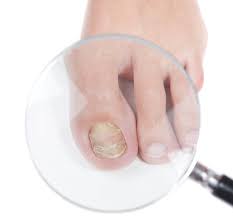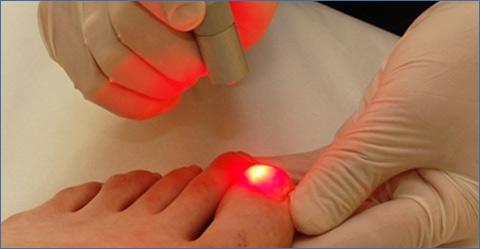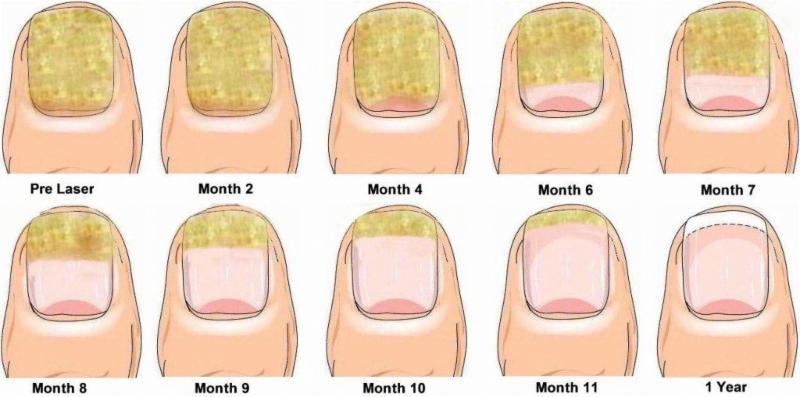Nail fungus, also called onychomycosis, is a common condition estimated to affect up to 10% of the population worldwide. It can cause nails to become yellow or discolored. As the infection advances the nail can become thick, brittle and separate from the nail bed. It can also cause pain when wearing shoes or walking.
What causes nail infection? (onychomycosis)
Dermatophytes are the fungi most commonly responsible for causing this condition. They are specialized organisms that live off of keratin which is the main component of nails and skin. The most common fungi that cause nail infection disease are Trichophyton rubrum, Trichophyton mentagrophytes, and Candida albicans. Everyone is at risk for infection because fungus is present everywhere in the environment.
Where does nail infection come from?
Nail infection is caused by contact with dermatophytes which are everywhere in our environment. Common sources of infection include swimming pools, public showers, gyms, and nail spas. Tight fitting shoes and
nail trauma can also lead to infection. Genetic susceptibility, poor health, and increasing age are also factors that increase the risk of nail infection.

 Yaletown
Yaletown

